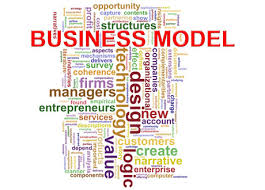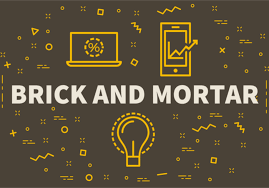10 Types Of Sustainable Business Models And How To Develop It
 10 Types Of Sustainable Business Models And How To Develop It
10 Types Of Sustainable Business Models And How To Develop It
A sustainable Business model is one that produces value for everyone without exerting too much pressure on the resources used to create it. A business model is supposed to be every business owner’s goal, such that the business yields profit quickly and remains that way for a long time. A business model that prioritizes sustainability is one that considers all stakeholders involved, and carries them along all through, and is transparent in its reporting.
Sustainable business model helps your business to be profitable, as no business can succeed unless it attracts customers. Your business value and proposition tells what your business is about, and how it attracts customers. Having a sustainable business model also allows you to go far into the future. It is not just about succeeding in business but to thrive far into the future.
No business can succeed by just relying on limited resources. There has to be constant supply of resources as this will prevent you from just building your castle on sand. You can’t have a sustainable business model without using sustainable resources. Many business are limited by lack of resources or expensive resources, while others are not just available. However, you shouldn’t be tempted to go for cheap resources as you must consider if they will last into the future. You have to look at the big picture before making such a decision.
A truly sustainable business model is one that gives back as much as it takes. A business model that is sustainable does not just take from the earth’s resources, it borrows them with the intent of replenishing back. This helps to promote both businesses and customers’ practices.
There are different types of business models for different businesses. Below are some of the types of sustainable business models.
- Franchise
A Franchise can be a manufacturer, retailer or distributor. It is a type of business between an individual (franchise) that uses the branding, and business model of a franchisor. There is a legal relationship between them that allows the franchise to be able to use the model. The franchise pays the franchisor a few (franchise fee) in exchange for the rights to use their business model to sell products.
The franchise uses the parent business models and brands, it doesn’t create a new product. Franchise has been around for a long time, and today, there are a number of them across industries and sectors. Franchising had contributed immensely to the total world’s economy and has proven to be beneficial to people who seek both freedom and financial stability. Example are McDonald’s and Pizza Hut.
- Manufacturer
A manufacturer uses raw materials to make finished products, and then sell directly to customers or another business that sells to customers. This business model uses connectivity as its strength. Companies sell products to customers and this allowed them to gain more channels of connecting with customers. Other companies relied on wholesalers and distributors to sell their products through retail outlets. Selling directly to customers results in higher profits for manufacturers and more savings for customers. Examples are General Electric and Ford.
- Brick-and-Mortar
This refers to a traditional business model that allows manufacturers, retailers and wholesalers to deal directly with customers in an office, shop or store. A lot of customers prefer this business model, as they can speak directly to the employees and ask questions about the products one on one. However, this business model cannot compete with internet-based companies because they have high operating cost and are not totally flexible.
Brick-and-Mortar allows the customers to be able to test the products before purchasing them. It reduces the risk of buying a product they’re not satisfied with. It also provides customers with instant contentment when purchases are made.
 10 Types Of Sustainable Business Models And How To Develop It
10 Types Of Sustainable Business Models And How To Develop It
- E-commerce
Electronic commerce is a business model that allows’s customers buy products over the internet. It can operate on four levels: business to business, business to consumer, consumer to business or consumer to consumer. E-commerce is an upgrade to brick-and-mortar business model. It focuses on creating a web store on the internet to buy and sell products. Most businesses in different industries uses this business model, as the world is going digital.
You would rarely see people walk into a store to buy products and items these says, they must go online, search for the products and order it, and have it delivered to their doorsteps. This business model is the future of the business economy in the world. It reduces the stress of physical shopping for consumers, and you can order for any product from wherever you are.
- Bricks-and-Clicks
This is a business model that allows companies have both online and offline presence where consumers can pick up the products they ordered online. This model allows flexibility in business, as it allows customers from anywhere in the world to order for products. And if the company does not have an offline presence where a customer is, they can order on the online platform and have the goods delivered to them.
This is a common business model used in clothing companies today. You can order for your products online, and pick up your stuff on your way from the office. You don’t have to wait to start shopping, as you can just pick up what you have ordered online.
Read Also: 5 Effective Follow-up Strategies that will Automatically Increase Your Sales
- Subscription
This business model allows businesses to keep customers over a long period of time contract. If a customer buys a lot of products per time, they can be placed on subscription, and will get recurring payments from them through repeated purchase. If a customer accession coats are high, this is the best option for such. It enables the business keep customers coming back, and it grants the customers opportunity to make a and payment and get products whenever they want it.
The idea is based on selling products or items to receive monthly or yearly revenue. The model concentrates on the way income is made such that a customer can make multiple payments or prolonged access for goods or services. Examples include Netflix or Dollar Shave Club.
 10 Types Of Sustainable Business Models And How To Develop It
10 Types Of Sustainable Business Models And How To Develop It
- Aggregator
It is a business model that works as a network. It allows firms or businesses gather information about a particular good or item manufacturers, make partners with themaufacturwrs and sell their products using its own brand. It is a recently developed model such that companies allows other miches to sell their products under their own brand. The money is earned as commission or dividend. The companies just sign a contract with the partners and they have access to sell their goods, products or services. Examples are Airbnb and Uber.
- Freemium
This is a common business model used by online companies. It is cost effective and a great marketing tool to attract new consumers. It works by allowing companies provide basic services to the consumers for free and charge them for premium accounts which have some extra features. The basic services come with some limitations, such that you will have to pay for premium to enjoy some benefits. For instance, YouTube’s free plan comes with disturbing ads, while the premium does not and it has other benefits too.
This is a way to attract users with the ‘free’, and then more them into paying for the premium. You won’t be able to have access to some features if you do not pay for premium.
- Online marketplace
This business model brings different sellers of the same products into one platform and then leaves them to compete with each other at competitive prices. Online marketplaces are free, but if a service provider or a business owner wants to improve their customer base and reach more audience, they have to pay a fee for featured as. Companies charge their uses with recurring payments for using their platforms.
This business model gives consumers options to choose from online. They get to choose which company to buy a particular product from based on their desires. It also gives businesses the opportunity to have more online presence. Example is Amazon.
- Data selling or licensing
This business model allows companies to sell data to third parties who uses them for analysis and survey. Internet has made it possible to have access to a number of data online, as it gathers its data based on users’ activities online. It allows companies have access to their customers’ information and increases customer service provision.
Hope you enjoy this article?
Share your thoughts in the comment session.
Contact us today for your business consultancy and business advisory services. We can help you fine tune your idea, structure your business, market your business, train your staff, consult on your retirement plan, coach you for financial success. We also write business plan and help with fund raising strategies and Grant applications. We can help you start, grow and expand your business.
Call or WhatsApp us now on 081 0563 6015, 080 7635 9735, 08113205312 or send email to dayohub@gmail.com and we will solve any of your business problem.
Related